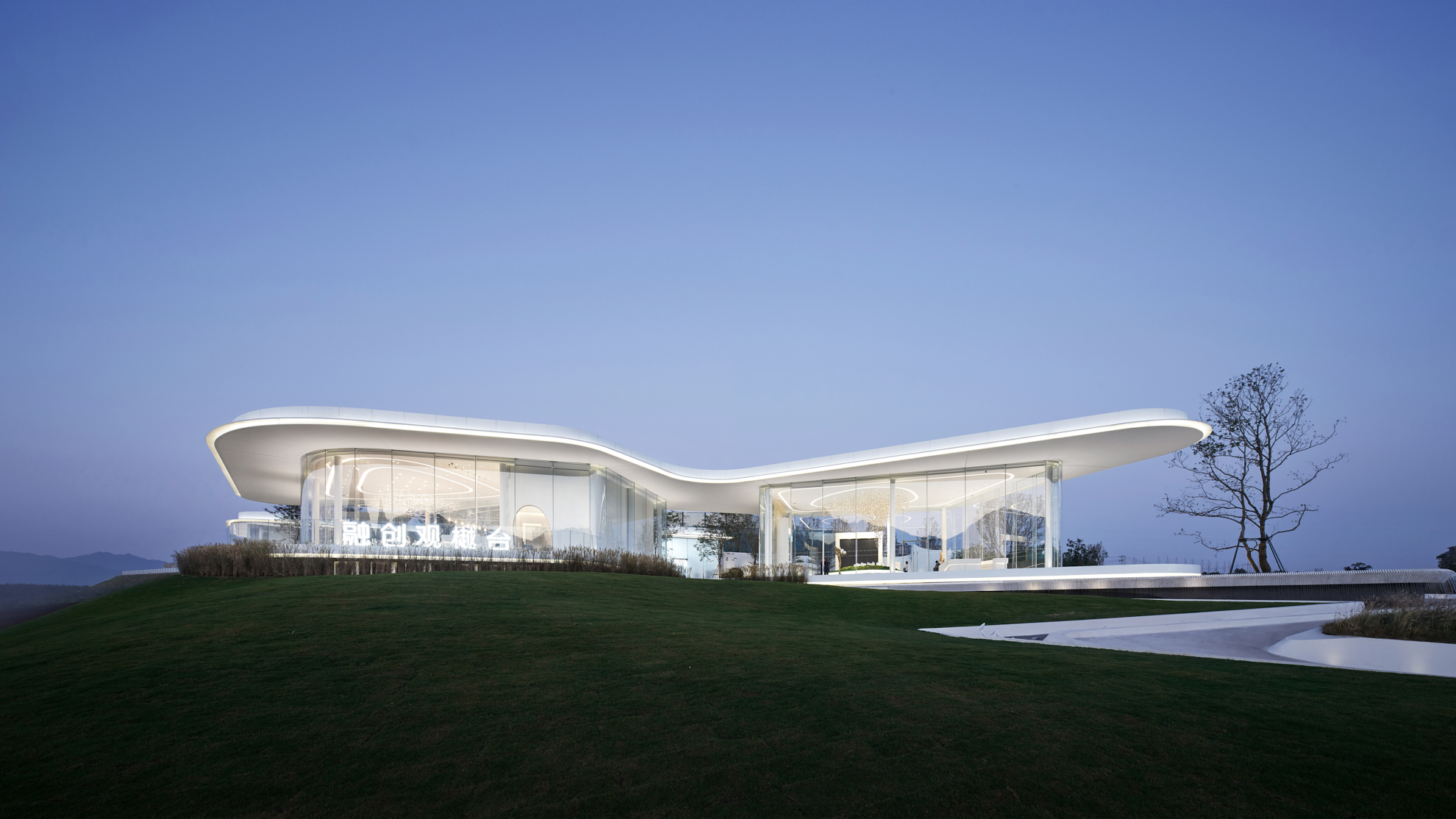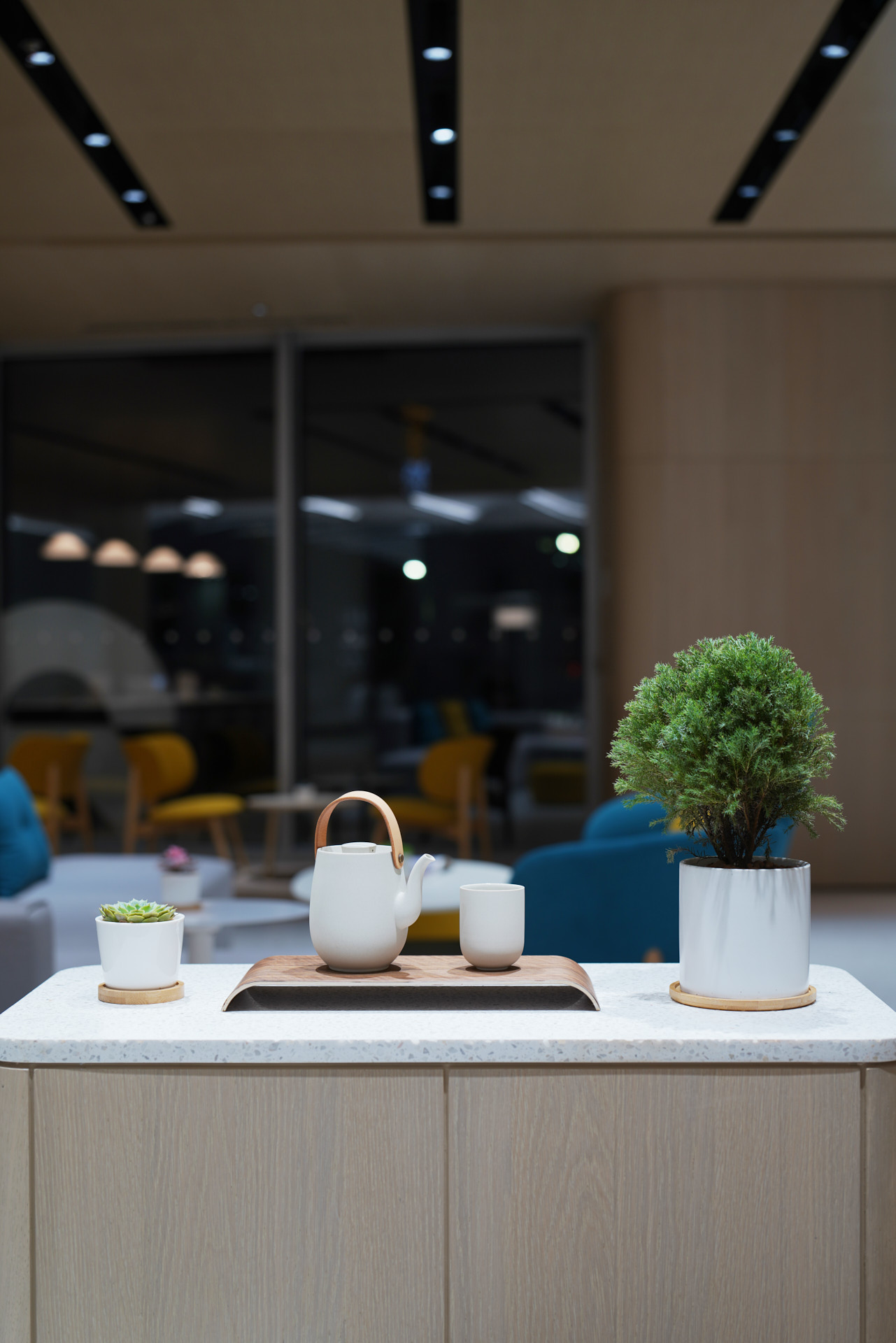 Photographer: Wang Dachao
Photographer: Wang Dachao
Looking away from the special category of lighting design to a broader world, the architect's thinking on light is more unrestrained. In the 7132 Thermal Baths project, Zumtuo set an amazing overhanging gap above the interior Gneiss wall, so that the light can freely sprinkle on the Gneiss texture, blurring the boundaries between interior and exterior. In the Klaus Brothers Church project, the process of building a slanted light from above is metaphorically referred to as a symbolic significance of obtaining new life. The lighting atrium of Louis Kahn's Exeter College Library, the dome dome of the Roman Pantheon, and the cross in Tadao Ando's Church of Light also highly praised the opportunity of cooperation between light and architecture with the results. Although light is unpredictable, it can be said to be one of the most important souls of architecture.
Louis Kahn said: "The soul of space is light";
Tadao Ando said: "It is more important than anything to really understand architecture, not through the media, but through their own five senses to experience space."
Steven Holl also mentioned in his design practice that a rich experience should be created by designing multi-level, multi-functional and multi-element spaces. By utilizing elements such as light, materials, colors, and sound, the space presents different appearances at different times and environmental conditions, stimulating users' curiosity and desire to explore.
Architects such as Siza, Balagan, Cobb, and Baeza all have their own unique expertise in utilizing light. Due to technological limitations, the era in which these masters lived mostly focused on discussing the relationship between natural light and space, as well as architecture. However, with the maturity of artificial light technology today, there are few discussions on the relationship between artificial light and space, and between artificial light and architecture.
 Photographer: Wang Dachao
Photographer: Wang Dachao
 Photographer: Wang Dachao
Photographer: Wang Dachao
 Photographer: Wang Dachao
Photographer: Wang Dachao
On the one hand, during the Great Leap Forward period of architecture in our country, a large number of internationalism style buildings were rapidly built, and brought a large number of easy-to-use dot, line, and surface media screens to brighten the city.
On the other hand, discussions about new technologies tend to focus on scientific and technological aspects, while the aesthetic trend and philosophical thinking brought about by new technologies overlook the spiritual needs generated by social development.
 Photographer: Wang Dachao
Photographer: Wang Dachao
 Photographer: Wang Dachao
Photographer: Wang Dachao
 Photographer: Wang Dachao
Photographer: Wang Dachao
So what we are currently seeing is a magical era, where theory and practice are decoupled, and it is also an era full of contradictions between material abundance and spiritual weakness.
 Photographer: Wang Dachao
Photographer: Wang Dachao
 Photographer: Wang Dachao
Photographer: Wang Dachao
 Photographer: Wang Dachao
Photographer: Wang Dachao
 Photographer: Wang Dachao
Photographer: Wang Dachao
 Photographer: Wang Dachao
Photographer: Wang Dachao
I have been working in lighting design for seventeen years and have witnessed firsthand the technological changes brought about by the great wheel of the times, from the era of halogen lamps to the era of metal halide lamps and then to the era of LED. Design professionals have also gone from being the first to only focus on the light emitted by lamps; The relationship between light and space; Then to the relationship between light and architecture; And the relationship between light and health discussed today. The changes experienced in this process are enormous - today's lighting design is not just about discussing the geometry of indoor illumination, what lighting fixtures to install, or how to trace the edges outdoors.
The public's understanding of light mainly depends on its ability to meet usage needs. The country has formulated many standards based on this, such as the "Building Lighting Design Standard GB50034" for indoor spaces, the "Building Daylighting Design Standard GB50033" for sunlight, and the "Urban Nightscape Lighting Design Specification JGJ/T-163" for urban environments. The design values are based on evidence, but how to express ideas is still in the early exploration stage.
 Photographer: Wang Dachao
Photographer: Wang Dachao
 Photographer: Wang Dachao
Photographer: Wang Dachao
 Photographer: Wang Dachao
Photographer: Wang Dachao
 Photographer: Wang Dachao
Photographer: Wang Dachao
 Photographer: Wang Dachao
Photographer: Wang Dachao
Today we are talking more about "Architectural Lighting". Architectural lighting refers to combining lighting design with buildings or indoor environment to create artistic, functional and emotional lighting effects. It is a comprehensive design concept aimed at enhancing the appearance, spatial atmosphere, and user experience of buildings through the arrangement, distribution, color, and control of lighting.
Architectural lighting not only provides comfortable lighting brightness, but also emphasizes the creative use of lighting to showcase the characteristics and beauty of the building. It can highlight the outline, shape, and details of buildings, creating a unique light and shadow effect. By adjusting the color temperature, intensity, and color of the lighting, different atmospheres and emotions can be created, providing users with a comfortable, warm, or creative experience.
The founder of architectural lighting is the first generation lighting designer Richard Kelly. One of his most famous works is the Seagram Building in New York, Kelly proposed the concept of the "Tower of Light", which is a milestone in architectural lighting. He used a customized vertical lighting system on the interior facade to highlight the core tube background, and set up layers of tube lights in the functional area to enhance the brilliance of the entire tower. Kelly's design focused on effects rather than lighting fixtures, and his definitions of "ambient light", "colorful light", and "focal light" still have extraordinary value today.
 ▲ Seagram Building
▲ Seagram Building
Looking away from the special category of lighting design to a broader world, the architect's thinking on light is more unrestrained. In the 7132 Thermal Baths project, Zumtuo set an amazing overhanging gap above the interior Gneiss wall, so that the light can freely sprinkle on the Gneiss texture, blurring the boundaries between interior and exterior. In the Klaus Brothers Church project, the process of building a slanted light from above is metaphorically referred to as a symbolic significance of obtaining new life. The lighting atrium of Louis Kahn's Exeter College Library, the dome dome of the Roman Pantheon, and the cross in Tadao Ando's Church of Light also highly praised the opportunity of cooperation between light and architecture with the results. Although light is unpredictable, it can be said to be one of the most important souls of architecture.
 ▲Valls Hot spring bathing area
▲Valls Hot spring bathing area
 ▲ Interior view of Exeter College Library
▲ Interior view of Exeter College Library
Today, with the development of technology, we are no longer limited to how to use natural light. In architectural lighting, we use various types of lamps and lighting equipment, such as projection lamps, down lamps, wall lamps, pendant lamps, etc. Through reasonable layout and positioning, we can project light onto specific areas or objects. At the same time, utilizing the shielding, reflection, and refraction characteristics of light, it is no longer difficult to achieve control and guidance of light, making the appearance or internal space of buildings more layered and three-dimensional.
Architectural lighting may not necessarily be a very forceful design form. The Longyan Guanyue Terrace project, designed by the author, focuses light on the most distinctive superflat roof of the building itself. The light covered by the flat roof above the site passes through both inside and outside, and is presented in a floating and lightweight manner above high slopes. The first principle of architectural lighting is to control light with restraint and strategy. This project has won a special award from the 2022 International Lighting Designer Award (IALD), an authoritative industry award.
 Photographer: Wang Dachao
Photographer: Wang Dachao
 Photographer: Wang Dachao
Photographer: Wang Dachao
 ▲ Night View of Longyan Guanyue Terrace (by Fang Fang)
▲ Night View of Longyan Guanyue Terrace (by Fang Fang)
Architectural Design: AAI International Architects © Wang Dachou
Architectural lighting can also be applied to indoor spaces to provide suitable lighting effects for different functional areas, such as offices, commercial spaces, exhibition halls, etc. Through the design of lighting, a suitable working environment, good product display effects, or a dramatic spatial experience can be created.
 Photographer: Lei Xujun
Photographer: Lei Xujun
 Photographer: Lei Xujun
Photographer: Lei Xujun
 Photographer: Lei Xujun
Photographer: Lei Xujun
 Photographer: Lei Xujun
Photographer: Lei Xujun
 Photographer: Lei Xujun
Photographer: Lei Xujun
 ▲ Interior of China International Design Museum (works by Fang Fang)
▲ Interior of China International Design Museum (works by Fang Fang)
Architectural design: Alvaro Siza+Carlos Castanheir © Lei Xujun
 Camera: Wang Dachao
Camera: Wang Dachao
 Camera: Wang Dachao
Camera: Wang Dachao
 Camera: Wang Dachao
Camera: Wang Dachao
 ▲ Nanchang NIO HOUSE (by Fang Fang)
▲ Nanchang NIO HOUSE (by Fang Fang)
Interior Design: LUKSTUDIO Studio © Wang Dachou
 Camera:Zhang Xi
Camera:Zhang Xi
 ▲ Xitou · Green City Yunlan Valley (by Fang Fang) Interior Design: Wanjing Design © Zhang Xi
▲ Xitou · Green City Yunlan Valley (by Fang Fang) Interior Design: Wanjing Design © Zhang Xi
 ▲ Xixi 2100CLUB (works by Fang Fang) (click on the image to see more)
▲ Xixi 2100CLUB (works by Fang Fang) (click on the image to see more)